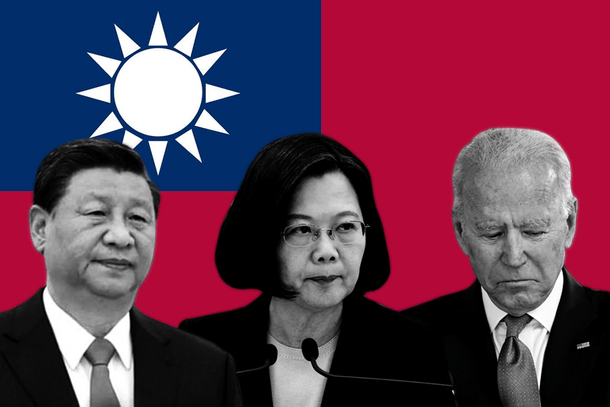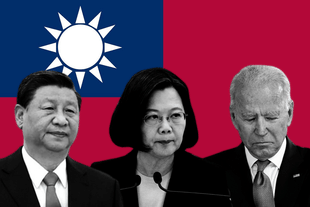World
America Can’t Save Taiwan
Tushar Gupta
Aug 04, 2022, 06:44 PM | Updated 06:44 PM IST
Save & read from anywhere!
Bookmark stories for easy access on any device or the Swarajya app.


Nancy Pelosi’s short trip to Taipei has again put the spotlight on the weakest link of the United States of America in the Indo-Pacific, that is Taiwan.
Beyond the cheerleading of the commentators in the West and the opinionated wailing of the communist promoters in mainland China, an honest answer must be sought about the objectives of the trip made by the Speaker of the US House of Representatives, and if this trip, one that had the backing of over half of the Republican Senators, changed anything for Taiwan.
Formosa or Republic of China, as Taiwan was referred to in the West in the 1950s and 60s, against the People’s Republic of China, has been a geopolitical issue for the White House since 1949, much before the Cuban Missile Crisis, the peak of the Cold War, the war in Vietnam, the political quakes in the Middle East, the opening up of the Chinese economy in 1978, the fall of the Soviet Union in 1991, the 2008 recession, and the pandemic.
Simply put, the world in which the US inherited the Taiwan problem was one where they called the shots, unilaterally.
Even in the 1950s, the western stance on Taiwan was as defensive as today. Back then, the British Labour Party members suggested that Formosa be left to the Communist Chinese, thus unifying the two nations in a civil war against each other.
The other opinion was to negotiate with the Communist government, the new superpower in the East, to ensure peace and the existence of an independent government in Taiwan. One of the other radical suggestions was to have US back Chiang Kai-shek, the leader of the nationalists, in his invasion of the mainland.
Thus, since the 1950s, the Americans have been working on sustaining the status quo in the Taiwan Strait. Back then, the concern was that any White House involvement to defend the nationalists would usher in the participation of Soviet Russia, which would be a drain on the US economy and warrant diverting resources from Western Europe, Africa, and elsewhere.
There was also a concern around supply lines for a prolonged battle in the far-east and the question of Russians supplying the Chinese with nuclear weapons.
Much has changed since then in the West and the East. Like the British decline in global stature in the first half of the twentieth century, a similar shift is underway for the United States.
The damage from the 2008 recession and the recent pandemic, the failures in Iraq and Afghanistan, the inability to stop the political takeover of Hong Kong by China, the lack of strategy concerning Ukraine, and a confused leadership with questionable cognitive abilities of the President himself accelerate this decline.
Unlike the 1950s, when some in the West could have imagined the Chinese nationalists exiled to Formosa taking back the mainland, the political and economic landscape has undergone a tremendous change.
To begin with, the Chinese economy is at par with that of the United States, superseding the West's economic consumption of raw materials. The Communist Party has weathered all possible political storms and has the validation of the West, one that took decades to come.
Militarily, in the Indo-Pacific region, China has an advantage in six of the nine conventional warfare areas as per a 2015 RAND study. Perhaps, that explains why the United States military declared Pelosi’s visit a bad idea, to quote President Joe Biden.
Further, when Biden himself, during his QUAD meeting, committed to Taiwan’s defense, the White House had to cover up the gaffe, stating the White House policy had not changed, and strategic ambiguity on Taiwan was ambiguous as ever.
So, where does it leave Taiwan in all this?
One, the White House would want the status quo to remain. To trust the US government with boots on the ground would be folly, and if a war was unconceivable in the 1950s when China was at its weakest, it is impossible today, given the latter’s stature.
Beijing, however, would want to continue its policy of coercion through repeated aggressive military drills, like the ones that began after Pelosi’s departure. Naval blockades cannot be ruled out, but to expect the US to send its naval fleet in response to the drills would be an exaggeration.
Two, the region's geography does not suit a prolonged US response. For instance, what would be the exit strategy of the US forces if they were to intervene, and would they be able to use the military bases in the Philippines, Japan, and South Korea for a prolonged period, and if so, would the countries also be dragged into the fight, and where does it leave the Russians and North Koreans?
Is the US willing to risk war in the Pacific to defend the cause of Taiwan for an infinite period against an almost equal superpower, along with Russia and North Korea?
Three, the golden goose in the whole China-Taiwan-US equation is the TSMC. To put things in perspective, the company has a significant share in the production of semiconductors globally. It is responsible for manufacturing all high-end chips designed in the US, like Apple A14 and M1.
Taiwan alone controls critical parts of the supply chain share. For the US, it is far cheaper to build in-house semiconductor capacity, as they are now looking to with the CHIPS and Science Act than to defend Taiwan indefinitely.
Four, the Chinese government can be accused of bluffing when it comes to Taiwan, but for President Xi Jinping, the unification of the island with the mainland is about personal legacy, the success of which will make him as great as Chairman Mao.
In the US, the question of Taiwan has been passed on from regime to regime, going back to the 1950s. For the Chinese, the pursuit has been decades in the making, as elaborated here. For China, this is also about displacing the great superpower, beginning with Indo-Pacific.
The possibility of the US response in the Indo-Pacific, more specifically against Taiwanese intervention, must be viewed from an economic angle, given the lessons from the Russia-Ukraine crisis and the pandemic.
The two countries are too economically interdependent to take down each other and, with them, the global economy. For the US, sustaining the status-quo and the semiconductor supply chain would be ideal, but time is running out, unfortunately.
It is not about Americans not wanting to, it is just about they being unable to save Taiwan. They can't.
This is the second article in the four-part series. Read the first part:
Pelosi’s Trip To Taiwan Is The Climax To Thirty Years Of Chinese Buildup
Tushar is a senior-sub-editor at Swarajya. He tweets at @Tushar15_





